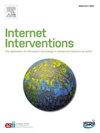与年轻人共同设计数字心理健康支持发展:系统回顾
IF 4.1
2区 医学
Q1 HEALTH CARE SCIENCES & SERVICES
Internet Interventions-The Application of Information Technology in Mental and Behavioural Health
Pub Date : 2025-05-31
DOI:10.1016/j.invent.2025.100835
引用次数: 0
摘要
共同设计方法提供了一个机会,让年轻人有意义地参与研究,以确保设计的支持是可用的,并能满足他们的需求。然而,协同设计目前如何应用于数字心理健康领域的年轻人尚不清楚。本综述旨在批判性地综合使用与年轻人共同设计来设计或修改数字心理健康干预和支持。在六个数据库中检索了2012年以来发表的英语实证论文。如果论文报道了参与在线心理健康干预或支持的共同设计的25岁以下的年轻人,则将其纳入。完成了符合这些具体标准的30篇论文的叙述综合。结果突出了用于描述协同设计和相关方法的可互换且不一致的术语。青年人的参与程度各不相同,而且缺乏对权力动态的考虑。未来的研究应该旨在为协同设计建立一个清晰一致的定义和术语,以及一个严格的报告协同设计的金标准框架,以确保该过程按照其最初的目的进行。讨论了青年协同设计领域的研究和实践意义。本文章由计算机程序翻译,如有差异,请以英文原文为准。
The use of co-design with young people for digital mental health support development: A systematic review
Co-design methods offer an opportunity to meaningfully involve young people in research to ensure that designed supports are useable and responsive to their needs. However, how co-design is currently being applied with young people in the digital mental health field is unclear. This review aimed to critically synthesise the use of co-design with young people to design or modify digital mental health interventions and supports. Six databases were searched for empirical papers published in English from 2012 onwards. Papers were included if they reported on young people aged up to 25 years of age who were involved in the co-design of an online mental health intervention or support. A narrative synthesis of 30 papers meeting these specific criteria was completed. The results highlighted an interchangeable and inconsistent terminology used to described co-design and related approaches across papers. The level of inclusion of young people varied and there was a lack of consideration for power dynamics. Future research should aim to establish a clear and consistent definition and terminology for co-design along with a rigorous gold-standard framework for reporting co-design in order to ensure the process is being carried out in line with its original purpose. Implications for research and practice in the youth co-design field are discussed.
求助全文
通过发布文献求助,成功后即可免费获取论文全文。
去求助
来源期刊

Internet Interventions-The Application of Information Technology in Mental and Behavioural Health
Medicine-Health Informatics
CiteScore
6.50
自引率
9.30%
发文量
94
审稿时长
6 weeks
期刊介绍:
Official Journal of the European Society for Research on Internet Interventions (ESRII) and the International Society for Research on Internet Interventions (ISRII).
The aim of Internet Interventions is to publish scientific, peer-reviewed, high-impact research on Internet interventions and related areas.
Internet Interventions welcomes papers on the following subjects:
• Intervention studies targeting the promotion of mental health and featuring the Internet and/or technologies using the Internet as an underlying technology, e.g. computers, smartphone devices, tablets, sensors
• Implementation and dissemination of Internet interventions
• Integration of Internet interventions into existing systems of care
• Descriptions of development and deployment infrastructures
• Internet intervention methodology and theory papers
• Internet-based epidemiology
• Descriptions of new Internet-based technologies and experiments with clinical applications
• Economics of internet interventions (cost-effectiveness)
• Health care policy and Internet interventions
• The role of culture in Internet intervention
• Internet psychometrics
• Ethical issues pertaining to Internet interventions and measurements
• Human-computer interaction and usability research with clinical implications
• Systematic reviews and meta-analysis on Internet interventions
 求助内容:
求助内容: 应助结果提醒方式:
应助结果提醒方式:


